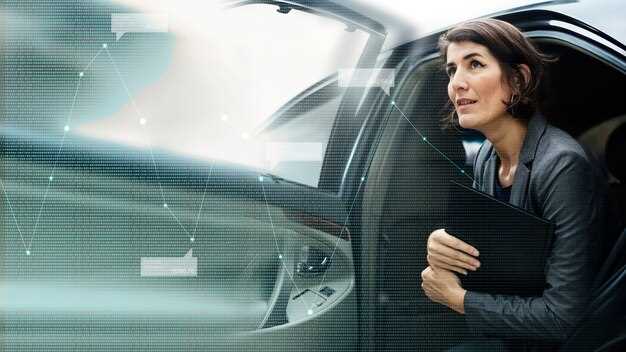Does Driving Style Impact Hybrid Car Efficiency?

The advent of hybrid vehicles has revolutionized the automotive industry, offering a cleaner and more efficient alternative to traditional gasoline-powered cars. However, the potential fuel savings offered by hybrid cars can be significantly influenced by the driver’s behavior behind the wheel. Understanding how different driving styles affect fuel consumption is essential for maximizing the efficiency of these advanced vehicles.
Driving habits such as acceleration patterns, braking intensity, and speed maintenance play a critical role in determining the overall fuel efficiency of hybrid cars. For instance, aggressive driving, characterized by rapid acceleration and hard braking, can lead to increased energy consumption and reduced mileage. In contrast, smooth and steady driving can help maintain optimal efficiency, allowing the vehicle’s hybrid system to operate at its best.
This article explores the various dimensions of driving style and its direct correlation with the fuel economy of hybrid vehicles. By examining empirical research and driving simulations, we aim to provide insights into how adopting efficient driving practices can significantly enhance the performance and sustainability of hybrid cars. Emphasizing the importance of responsible driving, we will illustrate how small changes in behavior can lead to substantial benefits for both drivers and the environment.
Acceleration Patterns: How Rapid Starts Affect Fuel Consumption
Acceleration patterns play a crucial role in determining the fuel efficiency of hybrid vehicles. Rapid starts, or aggressive acceleration, can significantly impact fuel consumption. Unlike traditional vehicles, hybrids utilize both an internal combustion engine and an electric motor, allowing them to optimize power delivery based on driving conditions. However, when drivers frequently engage in rapid starts, the efficiency benefits of hybrid technology can be compromised.
During rapid acceleration, hybrid cars often rely more heavily on the internal combustion engine, which tends to operate less efficiently under high load conditions. This results in increased fuel consumption and decreased overall efficiency. In contrast, a smooth and gradual acceleration uses the electric motor more effectively, leading to lower emissions and better fuel economy.
The table below summarizes the relative fuel consumption associated with different acceleration patterns in hybrid vehicles:
| Acceleration Pattern | Fuel Consumption (mpg) | Impact on Electric Motor Usage |
|---|---|---|
| Rapid Starts | 25 | Low |
| Smooth Acceleration | 45 | High |
| Moderate Acceleration | 35 | Medium |
| Deceleration / Coasting | 50 | Very High |
In conclusion, drivers of hybrid vehicles should be mindful of their acceleration habits. Adopting a more gradual acceleration style not only enhances fuel efficiency but also optimizes the use of the vehicle’s electric capabilities. Effective driving practices can lead to significant savings at the pump, making it essential for hybrid owners to understand the relationship between driving style and fuel consumption.
Braking Techniques: The Role of Regenerative Braking in Efficiency
Regenerative braking is a key technology in hybrid vehicles that significantly enhances fuel efficiency by converting kinetic energy back into usable power. When a driver applies the brakes, traditional systems convert this energy into heat, which is often wasted. In contrast, regenerative braking systems utilize electric motors to reverse their role and act as generators, capturing energy typically lost during deceleration.
The efficiency of regenerative braking depends heavily on driving techniques. Smooth, gradual braking is essential for maximizing energy recovery. Abrupt stops can lead to excessive use of conventional braking, which diminishes the potential benefits of regenerative systems. By training drivers to anticipate stops and slow down gradually, more kinetic energy can be converted into electrical energy and stored in the battery for later use.
Furthermore, the optimal engagement of regenerative braking varies with speed and driving conditions. At lower speeds, the system is highly effective, allowing for greater energy capture. However, at high speeds, conventional brakes may need to take over, as regenerative braking reaches its limits. Effective use of hybrid vehicle technologies also involves understanding when to rely on regenerative braking to maintain momentum and when to use conventional brakes for safety.
Moreover, terrain plays a crucial role in braking efficiency. Drivers navigating hilly areas can benefit from regenerative braking by utilizing engine braking during descents. This technique not only helps in energy recovery but also reduces wear on the traditional braking system, thereby enhancing overall vehicle longevity. In urban settings, frequent stops offer ample opportunities for regenerative braking to recharge the vehicle’s battery, promoting efficient operation.
In conclusion, the role of regenerative braking in hybrid vehicles extends beyond mere energy recovery; it influences overall driving efficiency. By adopting appropriate braking techniques, drivers can significantly improve the effectiveness of this technology, leading to better fuel economy and a more environmentally friendly driving experience.
Speed Management: Optimal Driving Speeds for Hybrid Vehicles
Effective speed management is crucial for maximizing fuel efficiency in hybrid vehicles. Unlike conventional cars, hybrid vehicles utilize both gasoline engines and electric motors, making their performance highly dependent on driving conditions and speeds. Studies indicate that the optimal speed range for fuel economy in hybrid cars typically falls between 40 to 60 miles per hour (mph).
At lower speeds, hybrids can rely more on their electric motors, which consume less energy than gasoline engines. However, when acceleration demands increase or when driving at speeds above 60 mph, the gasoline engine takes over to deliver the necessary power, leading to higher fuel consumption. Maintaining velocity within the optimal range allows hybrids to maximize electric motor usage, thus enhancing overall efficiency.
Variable speed driving, characterized by frequent acceleration and deceleration, can negatively affect fuel economy. Hybrid vehicles are designed with regenerative braking systems that can recover energy during deceleration. However, frequent stops and starts can lead to excessive reliance on the gasoline engine, decreasing fuel efficiency. Therefore, smooth driving patterns with gradual acceleration and deceleration are recommended.
Additionally, external factors such as wind resistance and road conditions can impact the efficiency of hybrid vehicles. Resistance increases significantly at speeds above 60 mph, making it essential for drivers to remain aware of their speed. Maintaining steady speeds, particularly on highways, can significantly enhance mileage. Utilizing cruise control features can help maintain a consistent speed and optimize fuel consumption over long distances.
In summary, effective speed management plays a pivotal role in the fuel efficiency of hybrid vehicles. By adhering to optimal speed ranges, avoiding aggressive driving behaviors, and utilizing smooth acceleration and deceleration, drivers can significantly improve their vehicle’s fuel economy and overall performance.
Use of Air Conditioning: Impact on Fuel Economy While Driving
Hybrid vehicles are designed for improved fuel efficiency, utilizing a combination of an internal combustion engine and electric power. However, certain driving habits, such as the use of air conditioning (AC), can significantly affect fuel economy. Understanding how AC impacts fuel consumption is essential for hybrid car owners to maximize efficiency.
When the air conditioning system is activated, it draws power from the vehicle’s engine or battery, which can lead to an increase in fuel consumption. The extent of this impact varies based on several factors:
- Driving Conditions: In stop-and-go traffic, the effect of AC on fuel economy is more pronounced due to frequent engine revving and the load on the battery. In contrast, during highway driving, the additional drag from using AC is less significant due to more stable speeds.
- Temperature Differential: The greater the difference between the outside temperature and the desired cabin temperature, the more energy the AC system requires. For instance, running AC in extreme heat will demand more power than on mild days.
- Vehicle Maintenance: A well-maintained air conditioning system operates more efficiently. Regular checks, including refrigerant levels and system cleanliness, can help minimize fuel economy impacts.
- Driving Style: Aggressive acceleration and braking increase fuel consumption. Using AC in a smooth, efficient driving style can help mitigate its fuel economy drawbacks.
The following are strategies to optimize fuel economy while using air conditioning:
- Pre-cooling: Park in the shade or use window shades to reduce cabin temperature before driving. This decreases the need for AC usage during the trip.
- Temperature Settings: Set the AC to a moderate temperature rather than the coldest setting. This lessens the load on the compressor.
- Ventilation: Use the car’s ventilation system or open windows during low-speed driving to minimize AC use, switching to AC only when necessary.
- Regular Maintenance: Ensure that the AC system is serviced regularly to function efficiently, thereby reducing its impact on fuel economy.
In summary, while the use of air conditioning in hybrid vehicles can negatively affect fuel economy, there are effective strategies to mitigate this impact. By optimizing AC usage, drivers can maintain comfort without significantly compromising fuel efficiency.
Terrain Awareness: Adapting Driving Style to Hills and Slopes
Driving on varying terrains, specifically hills and slopes, significantly influences the fuel efficiency of hybrid vehicles. Understanding how to adapt driving style to these conditions can maximize the advantages of hybrid technology while minimizing fuel consumption.
When approaching an incline, it is crucial to maintain a steady speed rather than accelerating rapidly. Rapid acceleration requires more power and can lead to increased fuel usage. Instead, gradual acceleration allows the hybrid system to optimize energy flow, utilizing electric power efficiently while reducing the load on the gasoline engine.
Utilizing the vehicle’s regenerative braking system is essential when descending a hill. By coasting or gently applying the brakes, hybrid cars can capture kinetic energy and convert it back into electrical energy. This energy recharges the battery and enhances overall efficiency, which can significantly improve fuel economy in mountainous terrains.
It’s also vital to anticipate changes in gradient and adjust throttle inputs accordingly. On steep declines, relying on engine braking, rather than heavy brakes, helps maintain control while preserving brake life. This technique not only aids in fuel efficiency but also provides a safer driving experience.
Driving in eco mode, when available, can also optimize performance on varied slopes. This setting adjusts throttle response and limits power to enhance fuel efficiency, making it more suitable for hilly areas where acceleration needs are different compared to flat terrains.
In summary, adapting driving style to accommodate hills and slopes is crucial for maximizing the fuel efficiency of hybrid cars. By maintaining steady speeds, utilizing regenerative braking, anticipating gradients, and leveraging eco mode, drivers can significantly reduce fuel consumption while enhancing the performance of their hybrid vehicles.
Eco-Driving Practices: Tips for Minimizing Fuel Use in Hybrids

To maximize the efficiency of hybrid vehicles, eco-driving practices are essential. By implementing these techniques, drivers can significantly reduce fuel consumption and lower emissions.
First, smooth acceleration and braking are crucial. Instead of sudden starts or stops, gradually increase speed and decelerate gently. This approach helps to maintain momentum and reduces the strain on the hybrid system.
Maintaining a steady speed is another key factor. Utilizing cruise control on highways can help keep a consistent speed, aiding in optimal fuel efficiency. Avoid rapid changes in speed, which increase fuel consumption.
Utilize regenerative braking whenever possible. Hybrid vehicles convert kinetic energy into electrical energy during braking, improving overall efficiency. Anticipate stops and coast in preparation, allowing the vehicle to slow down naturally whenever feasible.
Optimize driving habits by reducing unnecessary idling. When stopped for extended periods, such as at traffic lights, turn off the engine if safe to do so. This simple action can save fuel and reduce greenhouse gas emissions.
Plan routes ahead of time to minimize driving distance and avoid congested areas. Use navigation apps that provide real-time traffic updates, helping to select the most efficient route.
Ensure regular maintenance and tune-ups for the vehicle. Keeping the engine, tires, and hybrid system in optimal condition enhances fuel efficiency. Proper tire inflation and routine checks can prevent excess fuel consumption.
Lastly, be mindful of cargo loads. Excess weight can hinder fuel economy. Remove unnecessary items from the vehicle and avoid using roof racks whenever possible, as they create additional aerodynamic drag.
By adopting these eco-driving practices, hybrid vehicle users can maximize fuel efficiency, reduce costs, and contribute to a more sustainable environment.

